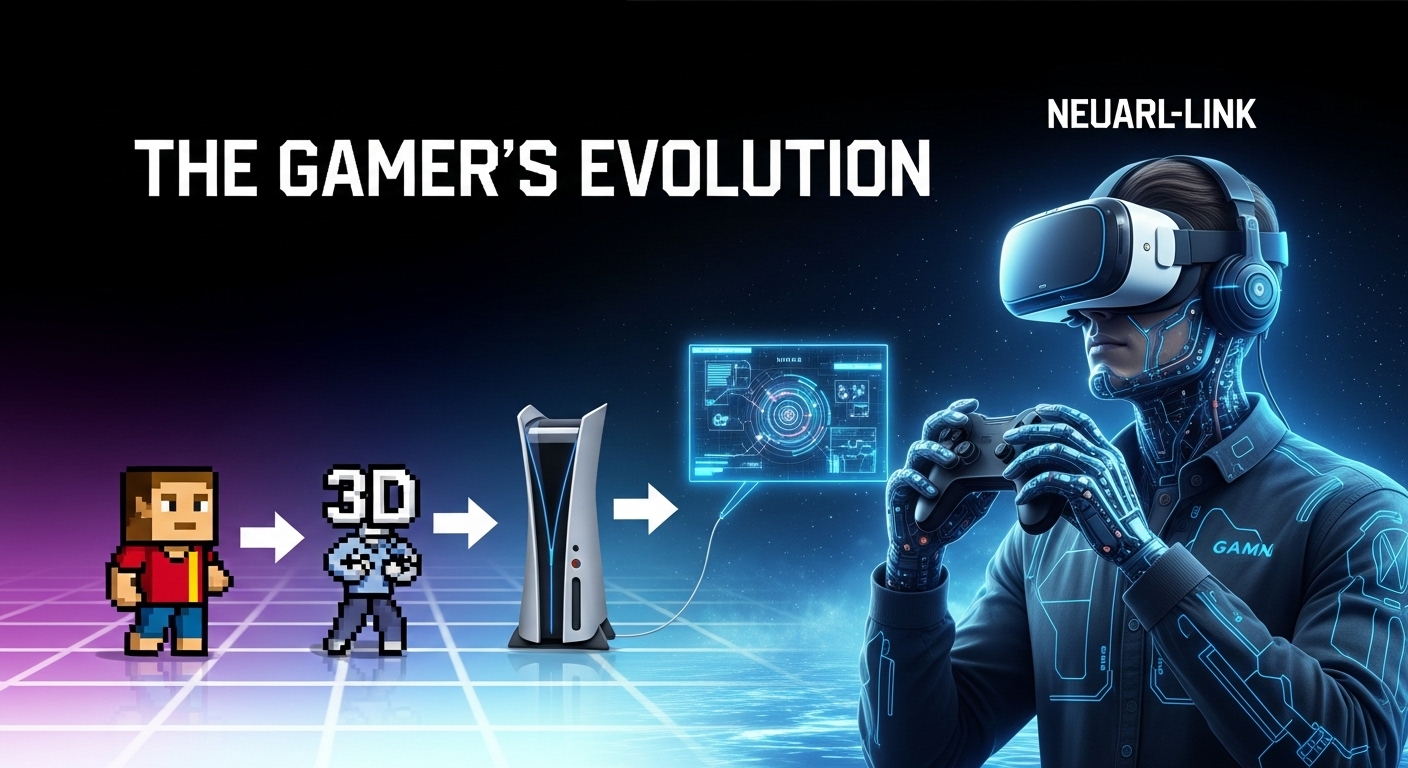Introduction: The World of Gaming – Beyond Entertainment
Gaming has evolved from a simple pastime into one of the most influential cultural phenomena of the 21st century. Whether you’re a casual player enjoying a mobile game or an esports enthusiast following the latest championship, gaming has become a central part of everyday life for millions around the world. But gaming is not just about passing time—it’s a dynamic and multifaceted experience that can educate, connect, and inspire.
From the early days of arcade games and home consoles to today’s immersive virtual worlds and complex multiplayer environments, gaming has continually pushed the boundaries of technology, creativity, and storytelling. But what is it about gaming that makes it such a powerful force in modern culture? Let’s dive deeper into how gaming has become much more than just a way to pass the time.
The Evolution of Gaming: From Pixels to Realism
The journey of gaming began in the late 20th century with simple pixelated graphics and basic gameplay mechanics. Early arcade games like Pong and Space Invaders were revolutionary in their time, but it was the rise of home consoles, such as the Atari 2600 and Nintendo Entertainment System (NES), that made gaming accessible to a broader audience. These early consoles introduced iconic characters and franchises, including Mario, Zelda, and Pac-Man, which would go on to shape the future of gaming.
As technology advanced, so did the complexity of games. The 1990s saw the arrival of 3D graphics and the rise of the PlayStation, Sega Saturn, and Nintendo 64, which brought a new dimension to gameplay. Games like Super Mario 64 and The Legend of Zelda: Ocarina of Time set new standards for interactive storytelling and world-building.
Today, gaming is a far cry from the early days of simple pixelated images. High-definition graphics, open-world environments, and lifelike animations now immerse players in vast, detailed virtual worlds. Games like The Witcher 3, Red Dead Redemption 2, and Cyberpunk 2077 offer cinematic experiences that rival Hollywood blockbusters, combining stunning visuals, intricate narratives, and complex characters.
The Social Power of Gaming: A New Kind of Connection
One of the most remarkable aspects of modern gaming is its ability to bring people together, regardless of location. Online multiplayer games have transformed gaming into a social experience, where players from all over the world can connect, collaborate, and compete in real-time. Whether it’s teaming up in Fortnite, strategizing in League of Legends, or exploring virtual worlds in Minecraft, gaming has become a global community.
The rise of online platforms, like Twitch and YouTube, has further amplified the social aspect of gaming. Gamers can now stream their gameplay, interact with fans, and share tips, tricks, and experiences. Esports, a multi-billion-dollar industry, has taken gaming to new heights, turning competitive gaming into a professional career. Major tournaments for games like Dota 2, CS:GO, and Valorant attract millions of viewers worldwide, turning players into household names.
But gaming doesn’t just bring strangers together—it fosters stronger bonds within existing communities. Whether it’s playing with friends, joining a gaming guild, or competing in local tournaments, gaming has created new ways for people to connect and form friendships. Many players find that gaming allows them to interact with others who share their passions, breaking down geographical and cultural barriers.
Gaming and Storytelling: A New Frontier for Narratives
One of the most exciting developments in gaming has been its evolution as a storytelling medium. Video games are no longer just about high scores or completing levels—they’ve become an art form capable of telling deep, complex stories. Games like The Last of Us, God of War, and Final Fantasy VII are prime examples of how video games can deliver emotionally impactful narratives.
What sets games apart from traditional forms of storytelling, such as books or movies, is the element of interactivity. Players are no longer passive observers; they actively participate in shaping the story. Their decisions, actions, and interactions with the game world have real consequences, making each gaming experience unique. This interactivity is what gives video games their power to immerse players in ways that other media cannot.
Moreover, gaming has allowed for diverse stories to be told. While early video games often focused on generic themes like heroism and adventure, today’s games explore a wide range of topics, including mental health (Celeste), identity and representation (The Last of Us Part II), and environmental sustainability (The Legend of Zelda: Breath of the Wild). This shift toward more inclusive and thought-provoking narratives reflects gaming’s growing maturity as a medium for creative expression.
The Educational Value of Gaming: Learning Through Play
In addition to being entertaining, games can also be powerful educational tools. Over the years, researchers and educators have recognized the value of gaming in fostering critical thinking, problem-solving, and creativity. Games like Portal and The Legend of Zelda encourage players to think strategically, solve puzzles, and make decisions under pressure—skills that are transferable to real-life situations.
Simulations and educational games, such as SimCity and Kerbal Space Program, have helped teach subjects like urban planning, engineering, and physics. Games like Minecraft have become popular in classrooms around the world, where students can explore math, history, and geography through the game’s creative sandbox mode. The open-ended nature of these games encourages curiosity and exploration, making learning fun and interactive.
Moreover, serious games—those designed specifically for education or training—are being used in fields ranging from medicine to military operations. Virtual simulations help medical students practice surgeries or train soldiers in tactical exercises, offering realistic environments for learning without the risks associated with real-life practice.
The Future of Gaming: Innovation and New Horizons
As gaming technology continues to evolve, so does the potential for new and exciting experiences. Virtual reality (VR) and augmented reality (AR) are on the verge of transforming how we play games. VR games like Half-Life: Alyx allow players to experience a fully immersive digital environment, while AR games like Pokémon GO blend the virtual and real worlds, encouraging players to explore their surroundings while interacting with digital elements.
The rise of cloud gaming is another exciting development. Services like Google Stadia, Microsoft’s xCloud, and NVIDIA GeForce Now allow players to stream games directly to their devices, eliminating the need for powerful consoles or PCs. This shift has the potential to make high-quality gaming more accessible to people around the world, regardless of hardware.
As gaming becomes more diverse and inclusive, the future promises even more innovations. New genres, improved AI, and greater storytelling capabilities are on the horizon, while gaming will continue to be an important space for community-building, creativity, and cultural expression.
Conclusion: Gaming’s Impact on Culture and Society
Gaming has come a long way from its humble beginnings, and its impact on society cannot be overstated. Today, it’s a multi-dimensional experience that brings people together, educates, and entertains. With advances in technology and storytelling, gaming has become a powerful medium for creativity, connection, and cultural exchange.
As we look to the future, it’s clear that gaming will continue to evolve, offering new experiences, challenges, and opportunities for players worldwide. Whether you’re a seasoned gamer or someone new to the world of gaming, one thing is certain—gaming has unlocked a new realm of possibilities, and its influence will only continue to grow.



